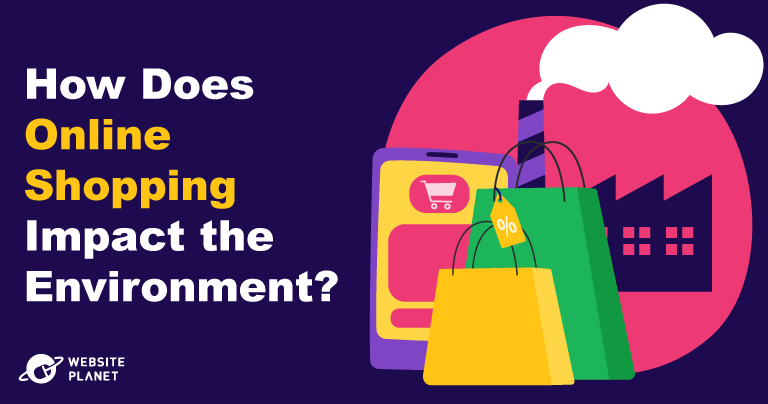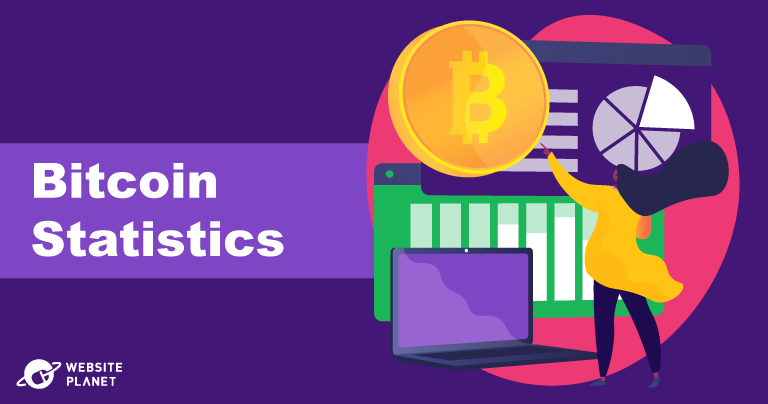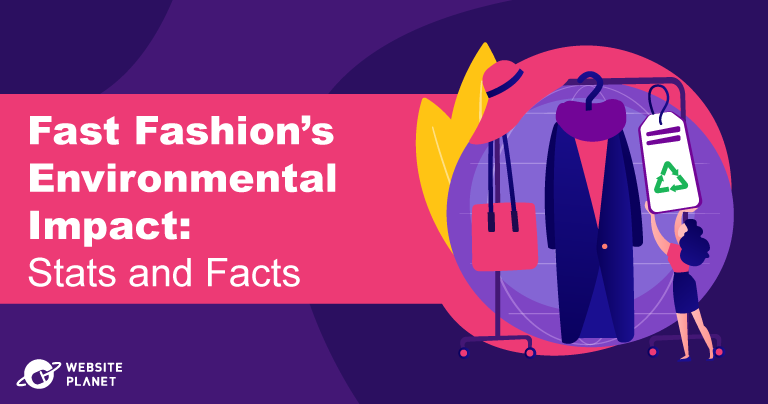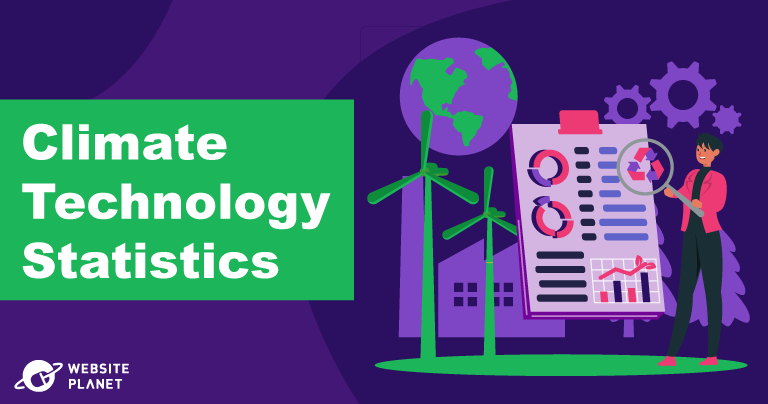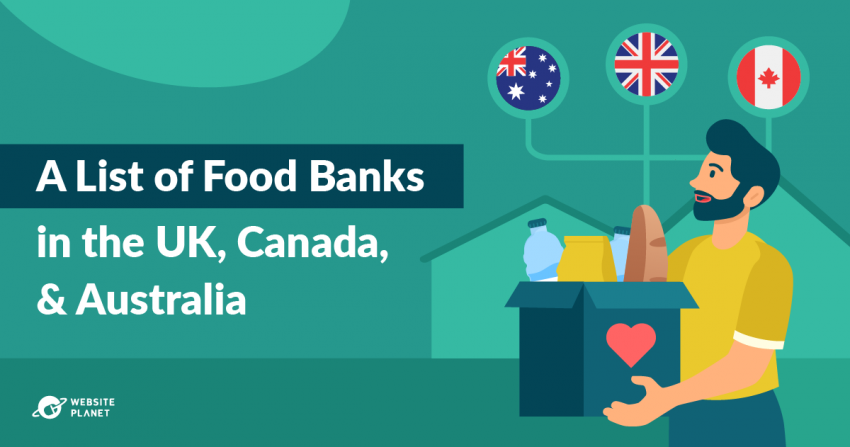In 2024, the retail sector accounted for approximately 25% of global greenhouse gas emissions, and this number is expected to rise. Consumer habits and expectations — including frequent purchases, high return rates, and fast delivery — contribute to overconsumption and waste, as well as stress on global supply chains.
E-commerce has made shopping faster and more convenient than ever. However, the convenience comes at an environmental cost that is often ignored. According to the World Economic Forum, the e-commerce industry is forecast to produce 25 million metric tons of CO2 per year by 2030.
As we grow increasingly used to fast, easy online shopping, we need to stop and ask what that convenience costs. This article will take a closer look at how e-commerce is affecting the environment and what steps we can take to reduce its harm.
How Does E-Commerce Affect the Environment?
From sourcing raw materials to delivering finished products at the user’s home, the supply chain takes a toll on the environment. According to Climate Trace, global emissions from goods shipping reached 9.1 billion tonnes of CO2 in 2024. The last mile (the journey from the delivery hub to the customer’s door) is especially carbon-intensive, accounting for up to 40% of all e-commerce emissions. Forecasts indicate these emissions could increase by 60% by 2030.
A study of 90 courier companies found that none publicly share their last-mile emissions. However, major players like Amazon Logistics, FedEx, UPS, DHL, DPD, and eKart are estimated to contribute around 4.5 million metric tons of CO2 annually from their deliveries.
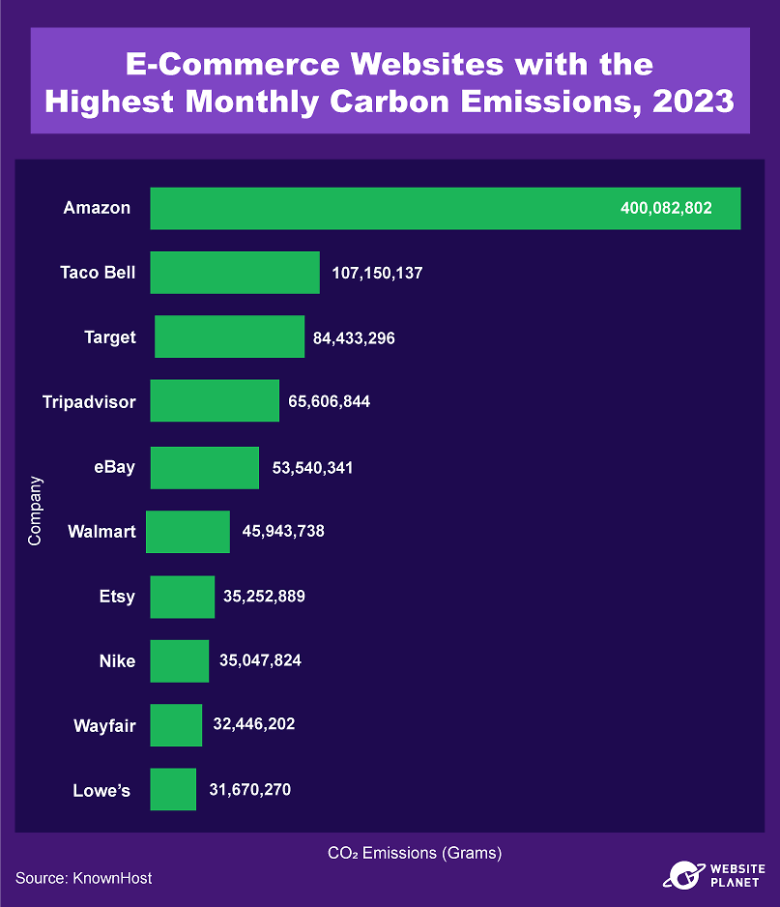
Shipping and Delivery
Physical stores are an important part of a company’s supply chain; they serve as a centralized hub where consumers receive goods. But in the era of e-commerce, the role of brick-and-mortar stores is waning as consumers increasingly expect goods to be delivered directly to their address. By 2030, deliveries from online shopping are projected to emit 160 megatons of carbon dioxide annually, roughly the same as 44 coal-fired power plants. This final leg of the delivery process is the most emission-heavy of the whole supply chain.
The increasing number of shoppers, as well as the arms race that retailers have entered as they attempt to capture their market through frictionless buyer journeys, are increasing global emissions. Known as “The Amazon Effect,” this has, on the one hand, created innovations like one-click shopping and two-day, same-day, and free delivery, and on the other, has created a perception that these services aren’t exceptional but should be the standard.
Today, 80% of consumers want their orders delivered within two days, and many expect them within hours. To meet these rising expectations, Amazon delivered over 9 billion same-day or next-day orders in 2024 alone, and even traditionally brick-and-mortar stores like Walmart and Home Depot now offer home delivery for many goods.
To meet tight deadlines, delivery vans are sometimes dispatched before they’re even full, resulting in more trips, more traffic, and more emissions. In some cases, fragmented delivery schedules mean that multiple vans serve the same area, or even the same house, within hours of each other. As a result, express shipping increases CO2 emissions by up to 15% compared to standard delivery methods.
Delivering in Urban vs Suburban vs Rural Environments
Where e-commerce deliveries happen makes a difference. Urban, suburban, and rural areas each come with their own environmental trade-offs.
In dense urban areas, delivery routes are short but logistically complicated. Narrow streets, traffic congestion, and limited parking make it hard for drivers to operate efficiently. Delivery drivers often double-park, leave their cars idling, and disrupt traffic.
These problems will only get worse. Without intervention, the number of delivery vehicles in the world’s top 100 cities is expected to rise, with forecasts predicting a 36% increase by 2030. This could result in delivery-related emissions increasing by 32%, as well as over 11 minutes of additional commute time per passenger each day.
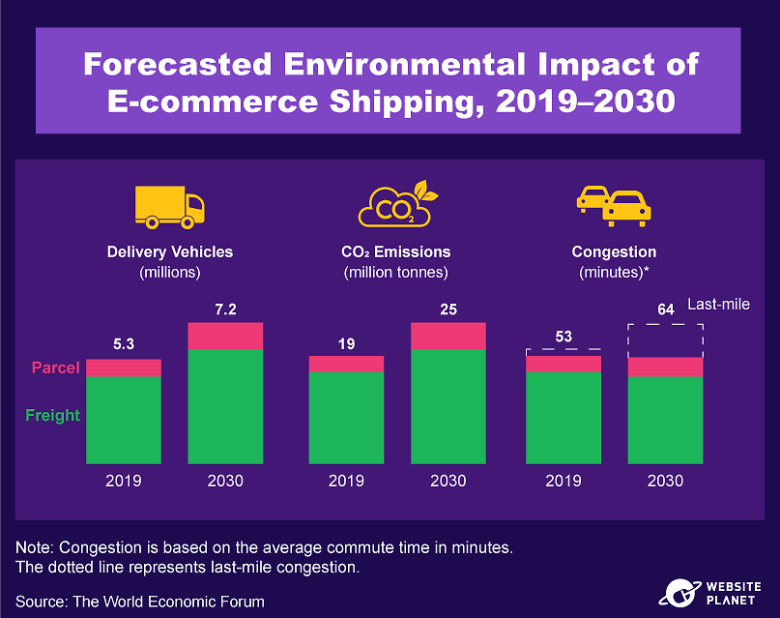
One proposed solution is to shift deliveries to off-peak hours, when roads are clearer. But this approach has challenges, as many deliveries require signatures, and leaving packages unattended increases the risk of theft.
Suburban areas, on the other hand, come with fewer traffic concerns and easier parking. However, delivery routes are on average longer and have fewer centralized drop-off points, which means fewer opportunities for consolidating packages and more fuel burned per delivery.
Rural deliveries tend to be the most carbon-intensive on a per-package basis. With homes far apart and few opportunities to bundle deliveries, drivers often have to travel long distances for each stop. Even though traffic and idling are minimal, rural delivery routes demand more time and fuel, and are estimated to be 30% more expensive than urban deliveries.
Missed Deliveries
A failed delivery usually means the courier makes at least one other attempt, and sometimes more. This burns more fuel and increases emissions; North America alone sees an estimated one billion redelivery attempts each year, generating around 3,742 metric tons of carbon emissions.
Sometimes, the responsibility shifts to the consumer, who must drive to a depot to collect their package, having a similar detrimental impact on the environment.
In addition to the environmental impact, missed deliveries also impact customer satisfaction. A Voxware study found that many shoppers won’t return to an online store after a late or missed delivery. To avoid losing sales, companies often respond by offering faster, guaranteed shipping, even if it leads to inefficiencies and an increase in emissions.
Excessive Packaging
E-commerce creates 4.8 times more packaging waste than brick-and-mortar stores. Every order shipped requires boxes, wrapping, tape, and filler, often done in quantities far beyond what’s necessary for the actual order. In 2022, Amazon by itself produced an estimated 208 million pounds of plastic packaging waste in the U.S. market alone — enough to circle the Earth over 200 times!
These materials are made using natural resources and energy-intensive processes. Cardboard, the most common packaging material, is used for 90% of all shipped products in the U.S. Throughout its lifecycle, one ton of it emits about 538 kg of CO2. And although the majority of it ends up recycled, that doesn’t erase the emissions from its production.
Plastic packaging poses an even bigger challenge because it’s harder to recycle; as a result, most of it isn’t. Globally, only 14% of plastic packaging is even collected for recycling, and much less is actually processed. The rest ends up in landfills or oceans, where it can take centuries to decompose. Experts estimate that, in 2025 alone, the e-commerce industry will use 4.5 billion pounds of plastic.
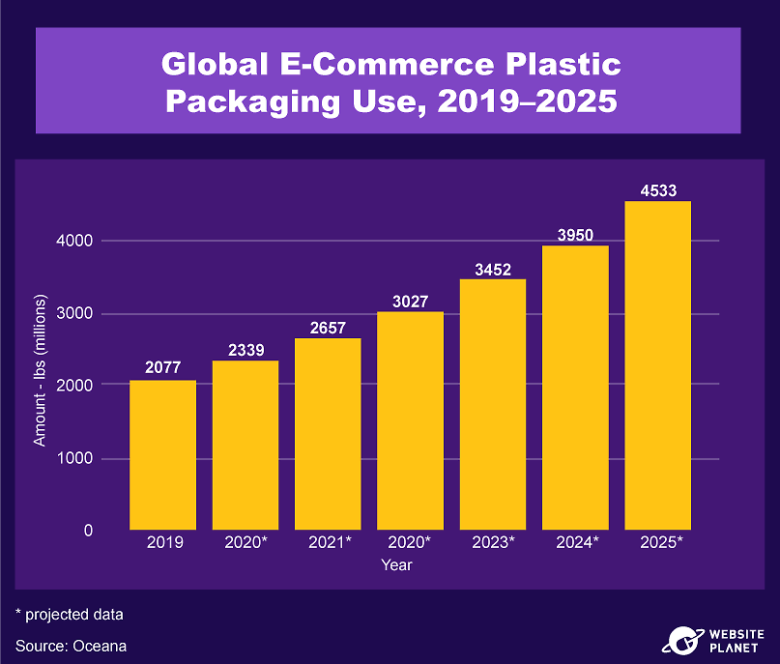
It’s not just the material, it’s the volume that these materials create. Oversized boxes take up more space in delivery vans, reducing efficiency. That leads to more trips, more fuel burned, and more emissions. Poor packaging design alone is estimated to add nearly 5 million extra delivery trips per year, generating about 86,000 tons of CO2.
Returns
Returned items add to transport emissions, packaging waste, and energy consumption, and many never even make it back into circulation. In the U.S. in 2020, nearly 17% of online purchases were returned annually, creating 5.8 billion pounds of landfill waste and 16 million tons of CO2.
Clothing is especially problematic, with one in four clothing items sent back in the U.S., according to Statista Consumer Insights. Issues such as hygiene increase the cost of preparing textiles for resale; for many retailers, it’s just cheaper to discard or destroy items than process and restock them.
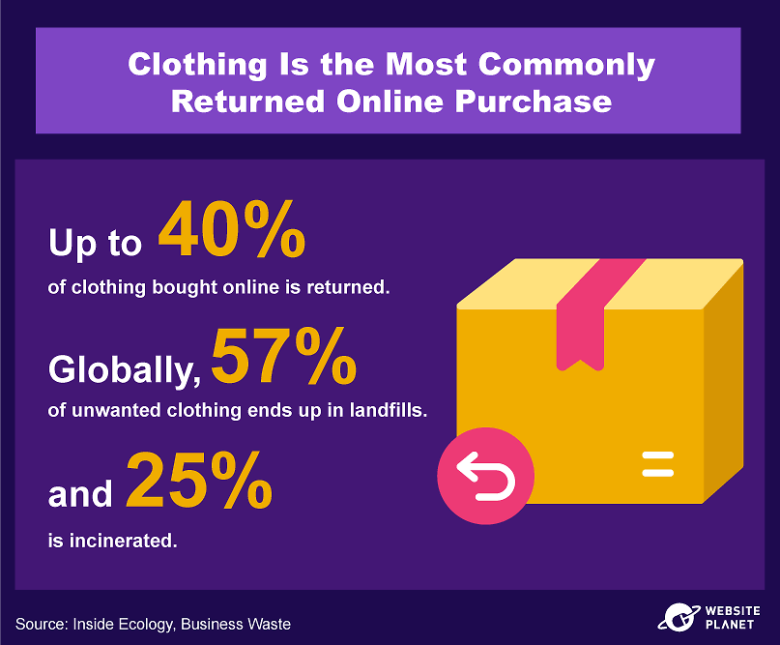
Free return policies have become standard in the online sphere and have the unintended consequence of increasing the rate of returns. While free returns facilitate risk-free purchases, they also incentivize over-ordering and impulse buying, which can come at the expense of the environment. Online items are returned at roughly three times the rate of in-store purchases; for many companies, return volumes are now growing faster than their actual sales.
Data Storage, Processing, Usage
The digital side of e-commerce also impacts the environment. Behind every purchase, search, and abandoned cart is a complex system of data centers, tracking tools, and predictive technologies, all of which consume energy and resources.
In 2023, data centers accounted for 2–3% of the world’s electricity usage, a figure that’s forecast to rise to 13% by 2030. These facilities store everything related to the big e-commerce websites, including product listings, customer profiles, inventory data, and purchase histories. The bigger the e-commerce sector gets, the more digital infrastructure it demands.
Every day, user activities like scrolling, watching autoplay videos, or triggering abandoned cart emails add to the load. E-commerce platforms store and process huge volumes of customer data, much of it tied to marketing and behavioral tracking. A single click may not use much energy, but multiplied across billions of users, it adds up. Some estimates suggest that internet activity, which includes online shopping, makes up 40% of an individual’s annual carbon budget.
AI and machine learning add another layer to this. Many e-commerce companies now use AI to forecast demand, manage warehouse stock, and personalize user experiences. While this can make internal systems more efficient, the energy required to train and operate these AI models is substantial. According to researchers at the University of Massachusetts, training a large AI model can emit more carbon than the lifetime emissions of five cars combined.
How the E-Commerce Industry Can Reduce Its Environmental Impact
Even given all of these drawbacks, e-commerce can still be more sustainable than traditional shopping if it’s properly managed. Research from MIT shows that if shoppers choose standard delivery instead of express, online shopping generates fewer emissions than going to a physical store.
Through sustainable packaging, smarter logistics, and the implementation of greener technologies, the e-commerce industry has the potential to dramatically reduce its carbon footprint.
Supply Chain Auditing
For many e-commerce companies, the biggest environmental impact comes from their value chain. Most retail stores don’t mine raw materials or manufacture those goods into the materials that consumers ultimately buy, and so aren’t directly responsible for the environmental impact of those activities. However, retailers can choose to work with more environmentally conscious producers and can negotiate for more sustainable practices with their partners.
But up to 98% of a retailer’s total emissions come from the broader supply process of sourcing raw materials, manufacturing, transportation, and warehousing.
To improve this, retailers can conduct regular supply chain audits. These audits help businesses identify hidden inefficiencies and environmental hotspots, like excessive emissions, energy waste, or unsustainable sourcing. This provides businesses with a clear overview of their current positions, allowing them to set sustainable and attainable goals.
Audits can also reveal which suppliers are lagging in sustainable practices, allowing businesses to shift sourcing or help partners improve their own operations. Regular audits also make it easier to track progress over time and stay accountable to long-term environmental commitments.
Recyl(abl)e Packaging
While e-commerce packaging can be difficult to recycle, many companies are investing in more sustainable alternatives.
ASOS, for example, redesigned its mailer bags to be thinner and fully recyclable, and also integrated a closed-loop system to reuse returned packaging. Puma cut cardboard use by 65% after introducing its “Clever Little Bag,” which heavily reduces its packaging-related emissions. Even luxury retailer Gucci replaced its glossy plastic bags with paper certified by the Forest Stewardship Council and now provides gift boxes only on request.
The shift is likely driven by consumer expectations as much as environmental responsibility. A recent study found that 92% of shoppers say a brand’s environmental practices influence their buying decisions. In response, more e-commerce companies are making changes. A report from the GWP Group shows a fourfold increase in the use of recyclable packaging, with 81% of consumers now receiving goods in eco-friendly materials.
Recyclable packaging is only one part of the solution, though. Reusable packaging offers even greater impact, with the potential to reduce emissions by more than 60% compared to single-use options.
One example of an e-commerce company successfully reducing its packaging waste is the Finnish retailer Scandinavian Outdoor. The company partnered with RePack to offer reusable packaging, rewarding customers with a discount on their next purchase when they return the package. Since implementing the system, the company has avoided sending over 50,000 single-use packages and now sees a return rate of 74% on its reusable packaging.
Minimal Packaging
Reducing the total volume of packaging used in each delivery is another way e-commerce companies can lower their environmental impact. Less material equals less waste, but it also means lower emissions from transport, storage, and production.
Minimalist or bespoke packaging is one solution, where packaging fits the size and shape of each specific product. This helps eliminate unnecessary layers, fillers, and void space. Smaller, lighter packages require fewer raw materials and allow delivery vessels to carry more items in each trip, which cuts shipping costs and reduces emissions.
Another way to reduce the materials used in packaging is to use adhesive dots as a means of securing items in their packaging. A report from the KHS group found that material consumption was reduced by 85% when they started using dots. While this isn’t viable for every product, under the right circumstances, it can save money and reduce waste.
Sustainably Powered Vehicles
Moving to sustainably powered vehicles can also help e-companies reduce their overall carbon footprint. Delivery trucks and vans powered by fossil fuels emit significant amounts of greenhouse gases in their operation, contributing to poor air quality, global warming, and other environmental damage.
Electric vehicles (EVs), on the other hand, can be a more environmentally friendly alternative, producing over 50% fewer greenhouse gases over a vehicle’s entire lifecycle, including manufacturing, operation, and end-of-life (recycling or disposal). And they have zero tailpipe emissions, an important consideration especially in cities suffering from poor air quality.
That said, EVs do have environmental impacts. Manufacturing a single EV generates about four tons of CO2, mostly from the battery production. And the energy grid used to charge an EV also matters; grids powered by green technologies such as wind turbines or solar power are more environmentally friendly than grids run on fossil fuels.
Optimized Delivery Routes
Last-mile delivery is one of the most carbon-intensive stages of the e-commerce supply chain, accounting for up to 30% of all logistics-related CO2 emissions.
By using route optimization tools, companies can minimize unnecessary mileage, avoid traffic bottlenecks, and reduce fuel use. One study suggests that optimized routes can cut greenhouse gas emissions by up to 62%, largely by reducing the time vehicles spend idling, circling for parking, or backtracking. In dense urban areas, better planning also eases congestion and reduces the need for double parking or lane-blocking stops.
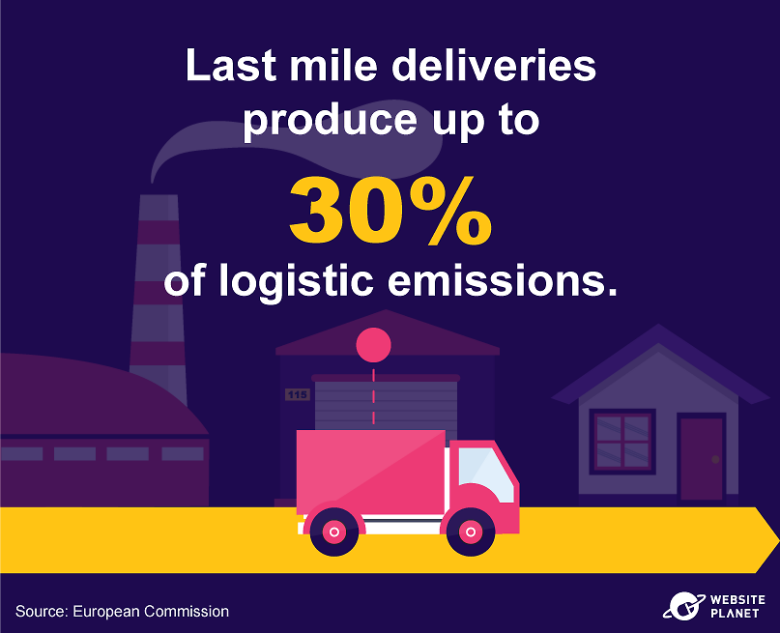
Another way to optimize routes is to consolidate orders. Many online shoppers order multiple items at once, yet these often arrive in separate shipments. Bundling items into a single, coordinated delivery can reduce emissions by as much as 34%, while also lowering costs and packaging waste.
Invest in Energy-Efficient Data Centers
Data centers use massive amounts of electricity, but green data centers are a sustainable alternative. Powered by renewable energy sources like wind, solar, or hydro, these facilities can reduce their carbon footprints to near zero. While building these facilities can be more expensive upfront, they offer long-term savings through lower energy costs and potential tax incentives.
Though not exclusive to e-commerce, some of the world’s biggest companies are implementing green strategies in their data centers. Apple’s North Carolina facility, for instance, is powered entirely by renewable energy. Google’s data center in Finland uses seawater to cool its servers, greatly increasing the efficiency of one of the most energy-intensive data center processes.
Even without investing in an entire green data center, companies can cut energy use through smaller upgrades. Consolidating underused servers, switching to eco-friendly cooling systems, and installing smart sensors can reduce a data center’s energy use by up to 30%.
Manage Returns Efficiently
Another way e-commerce companies can reduce waste is by handling returns more efficiently. This includes investing in more efficient reverse logistics systems, like warehouse space, dedicated return-processing areas, and dedicated staff. According to Invesp, 67% of consumers check a retailer’s return policy before buying, which makes the handling of returns both a sustainable and competitive concern.
To discourage unnecessary returns, some brands are starting to disincentivize customers from returning items. Companies like H&M, Uniqlo, and ASOS charge for returns or offer compensation that’s less than the original purchase price. On the other hand, low-cost platforms like Temu often skip the return process altogether, refunding the customer while allowing them to keep the item, as handling the return would cost more than the product itself.
Some companies are also investing in repair programs as a longer-term solution. Instead of discarding returned goods or sending out replacements, brands are beginning to fix and resell lightly used items.
A report by WRAP found that 82% of repaired goods prevent the purchase of a new replacement, helping cut emissions and resource use. For example, repairing one cotton shirt instead of replacing it saves roughly 7.5 kg of CO2, while choosing second-hand jeans over new ones can save 30 kg of CO2.
Ship to Drop Boxes Instead of Physical Addresses
One way to help reduce emissions from last-mile delivery is by consolidating shipments to centralized pick-up points instead of individual homes. Parcel lockers or drop boxes are secure, easy to use, and often available 24/7. They can help minimize failed delivery attempts and avoid multiple trips to the same neighborhood, reducing last-mile CO2 emissions by nearly two-thirds.
Having items shipped to a drop box location also eliminates porch piracy, as parcels are shipped to a secure box instead of being left unattended on a porch. Additionally, options to buy online and pick up in store (BOPIS) allow people to collect their packages at their convenience, such as while running other errands in that part of town.
Because drivers can deliver dozens of packages to a single locker site or staffed counter, these setups lower fuel use, cut idling time, and reduce congestion on busy streets. They also lessen the risk of parking violations, particularly in cities where curb space is limited.
Nano and Micro Fulfillment
Instead of shipping to the customer directly from centralized warehouses, many e-commerce companies are now using smaller, localized fulfillment centers. Known as nano or micro fulfillment hubs, these facilities store high-demand products closer to customers, reducing the distance between purchase and delivery.
This means fewer delivery miles, faster shipping, and lower emissions. According to Accenture, nano and micro fulfillment hubs can cut last-mile emissions by 17–26%. These facilities also reduce delivery congestion. In cities like Chicago, London, and Sydney, nano fulfillment centers have led to a 13% drop in delivery traffic and up to a 20% reduction in carbon emissions.
How Consumers Can Reduce the Environmental Impact of E-Commerce
Consumers also have a part to play in reducing e-commerce’s carbon footprint.

Choose Slower Shipping Options
When you choose slower shipping at checkout, you’re helping reduce the environmental cost of your order. Slower shipping gives retailers more time to bundle shipments, pack efficiently, and use optimized delivery routes. It also reduces the chance that your package will be flown by air, which generates up to 12.6 times more emissions than ground transportation.
Research from MIT found that choosing longer delivery options can significantly reduce CO2 emissions related to transportation. If the item isn’t urgent, this is one of the simplest ways to lower the carbon cost of online shopping.
Consolidate Orders
Consolidating your purchases into fewer shipments helps cut down on packaging waste and delivery emissions. Fewer boxes mean less filler material, less fuel used, and fewer delivery trips.
Orders are often split because items come from different warehouses or are fulfilled on different schedules. This is especially true when you use services like Amazon Prime. Fast delivery can mean multiple trucks delivering parts of the same order.
To avoid this, consider using consolidated delivery options. For example, Amazon Day lets you choose a fixed day for deliveries, grouping multiple orders into one shipment. This approach can reduce carbon emissions by up to 13%.
Select Eco-Friendly Options
Many e-commerce sites now offer greener options at checkout. Look for shipping options that use minimal or recyclable packaging, or those labeled as low-emission or carbon-neutral. For example, EarthHero, an online marketplace of sustainable goods, offsets carbon emissions from shipping and uses recycled materials for packaging. Etsy also offsets 100% of shipping-related emissions and powers its platform with renewable energy.
You can also choose to support brands with circular or second-hand programs, which help reduce manufacturing and delivery-related emissions. Oxfam estimates that if half of all clothing purchases were second-hand, it would save 12.5 billion kilograms of CO2 — the same as 17,000 round-the-world flights.
For example, Patagonia’s Worn Wear initiative encourages customers to buy and trade used gear, reducing waste and extending product life. Allbirds displays the carbon footprint of each product on its site and ships using 90% recycled cardboard.
Choosing goods made from low-impact or recycled materials like organic cotton, hemp, or repurposed fabrics can also help reduce your carbon footprint. These options use fewer resources and produce fewer emissions. Clothing made from recycled content can reduce CO2 output by up to 80%.
Before checking out, ask yourself: Do I need this item now? Does it need to be new?
Minimize Returns
E-commerce returns add to packaging waste, transportation emissions, and energy use. In some cases, returns can add up to 30% of the emissions associated with a single order.
The majority of returns are avoidable. Less than 20% of returns are because the goods are damaged. Most items are returned because of sizing issues, impulse purchases, or unmet expectations. These can often be prevented by taking a few extra steps before buying.
Read product descriptions carefully. Check size guides, measurements, and photos. Look at customer reviews, as they often provide real-world insight into fit, quality, and performance. When available, use tools like virtual try-ons or fit calculators. Measure your best-fitting clothes on a flat surface and keep a note of the measurements in your phone. You can compare this to the measurements listed on websites.
Shop Locally When Possible
Local purchases can reduce the need for long-haul delivery, extra packaging, and return shipments. If you do need to return something, it’s easier to manage, as you can just deal with the business directly.
Shopping locally benefits the community, too. For every $100 spent at a locally owned business, about $68 stays in the local economy. This can help support jobs, services, and community development. Plus, local businesses are more likely to use nearby suppliers, hire residents, and reinvest profits in the region. They also tend to use fewer infrastructure resources and generate less waste than the e-commerce giants.
Residents with access to more local stores also drive up to 26% fewer miles and are more likely to walk, bike, or use public transport. Whenever possible, consider walking or taking public transport to a nearby shop instead of driving to help save on emissions.
What Can Governments Do?
Both businesses and consumers play important roles in managing the environmental impact of online shopping, but large-scale change often depends on government policy. Local, national, and international authorities have the power and influence to change the industry by investing in infrastructure, regulating waste and emissions, and incentivizing greener practices.
At the city level, governments are already experimenting with logistical reforms. In 2023, the New York City Department of Transportation launched a three-year pilot of microhub zones. These shared delivery spaces allow trucks to offload goods onto low-emission vehicles, like electric vans and cargo bikes, for final-mile delivery. The goal is to ease congestion, reduce emissions, and cut down on double parking.
At the national and regional level, governments are setting targets to reduce packaging waste and carbon emissions. In the EU, for example, new rules require countries to cut packaging waste per person by 5% by 2030 and 15% by 2040, and to recycle at least 65% of packaging by 2040.
China, which produces one-third of global CO2 emissions, has made logistics a key focus of its broader climate goals. The logistics industry now accounts for roughly 10% of China’s total carbon output, second only to manufacturing. In response, the government is phasing out single-use plastics, expanding recycling, and investing in cleaner transport systems, with the hope of reaching carbon neutrality by 2060.
In the U.S., packaging regulation is a bit more complex, since it can differ from state to state. The Environmental Protection Agency (EPA) has set a voluntary national goal to increase the recycling rate to 50% by 2030, but enforcement varies.
Several states, including California, Oregon, Maine, Colorado, and Minnesota, have adopted Extended Producer Responsibility (EPR) laws, which require companies to manage the lifecycle of their packaging. California, for example, mandates minimum recycled content in select packaging and aims for all packaging sold in the state to be recyclable, compostable, or reusable by 2032.
Governments can further support sustainable e-commerce by offering tax incentives for electric delivery fleets, funding research into greener packaging materials, or by mandating carbon reporting for major retailers. Coordinated policies like these reduce emissions and encourage businesses to compete on sustainability, not just speed or price.
The Bottom Line
E-commerce has changed the way we shop, but it carries increasingly heavy environmental costs. Delivery emissions, packaging waste, and energy use all create environmental strain. Every click and cart leaves a carbon trace. Making small changes across the e-commerce space, like selecting slower shipping, consolidating orders, and supporting eco-friendly companies, are enough to make a lasting difference.
Governments also play a crucial role. By regulating packaging, supporting greener logistics, and setting climate targets, they can drive systemic change across the retail sector.
Ultimately, we all share the responsibility. Thoughtful choices at every level, from policy to checkout, will determine how sustainable the future of online shopping can be.
